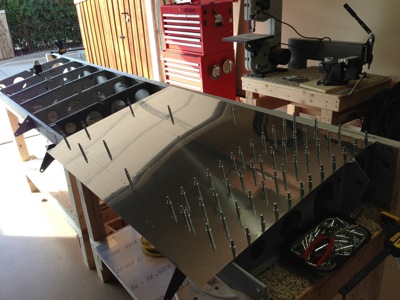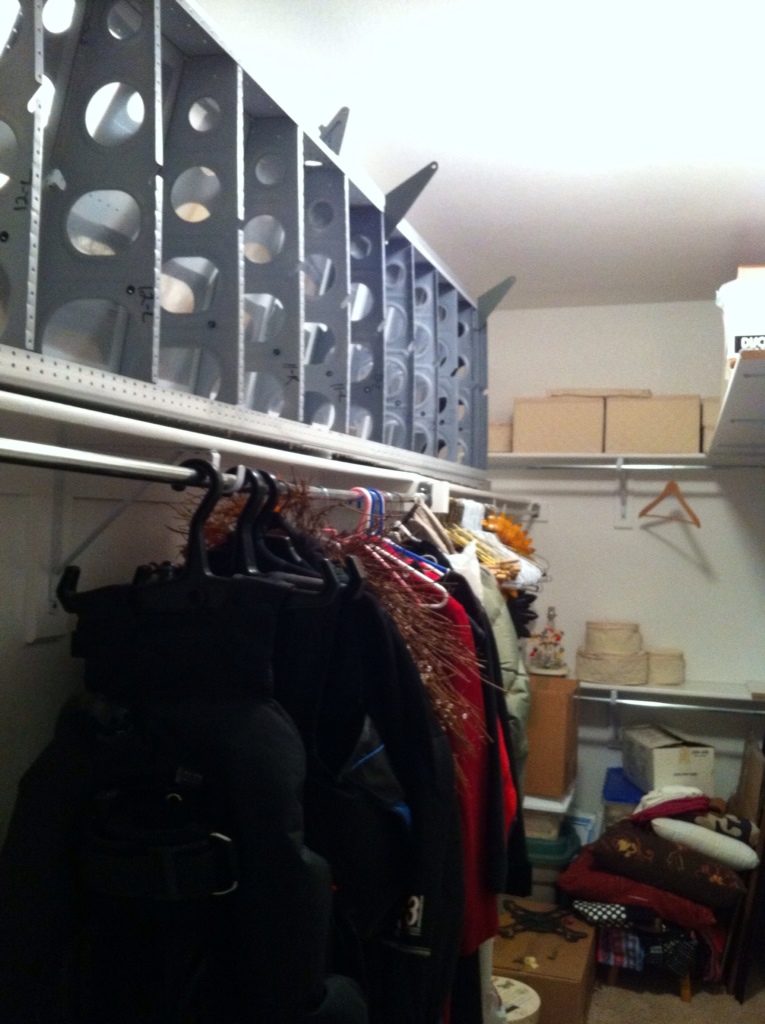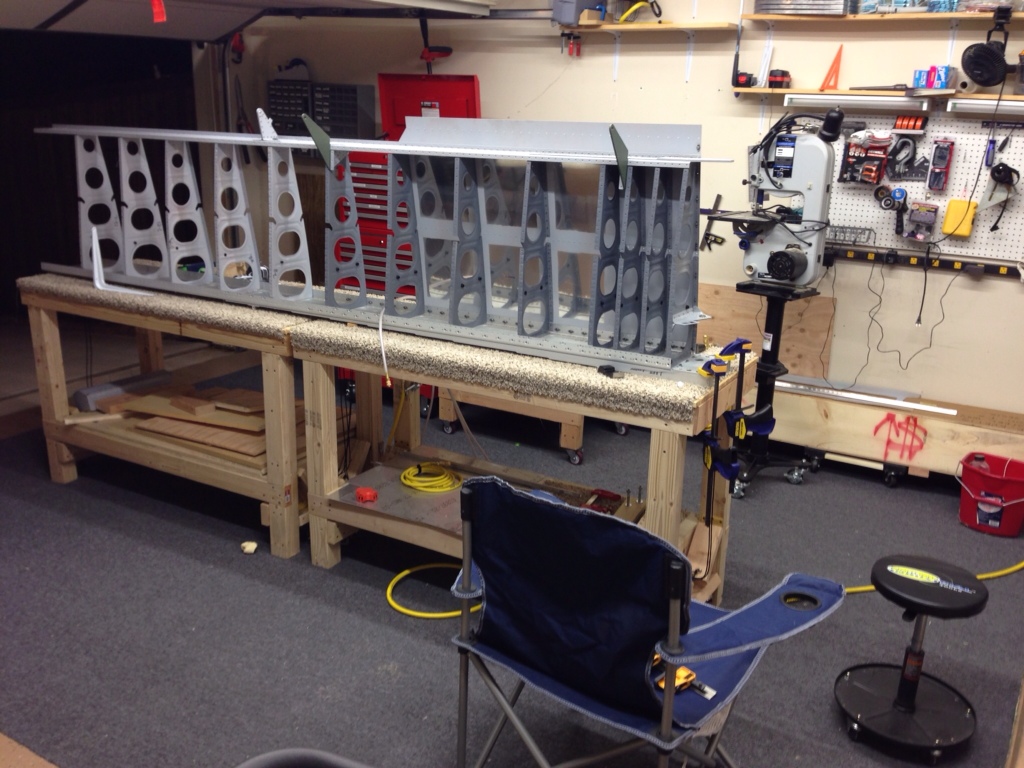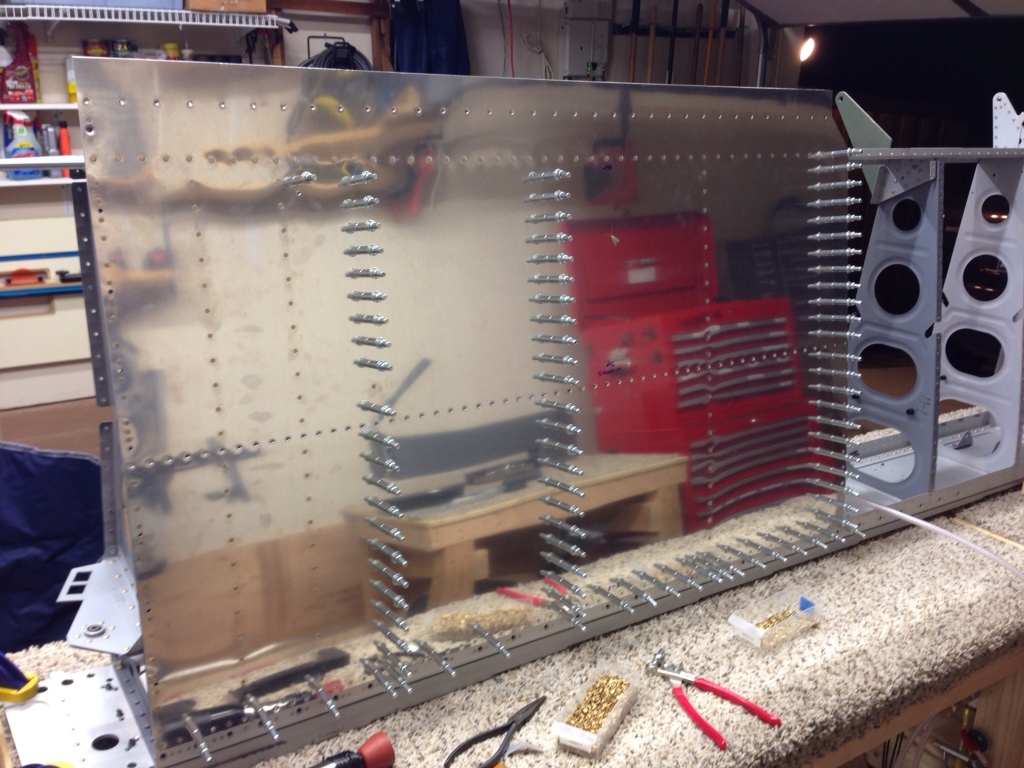Today I got the 3/8 inch hole reamed in the aft spar thanks to the helping hand of Ashley. Then I got the aft spar riveted onto the ribs. I squeezed most of the rivets but the bottom row of rivets was tough to get to (without a longeron yoke…may need to invest) so I drove those with the gun. In the end, it would have been faster to drive all of them because I wouldn’t have had to mess with new squeezer settings for each different size of rivet. Maybe I’ll do that for the right wing. The third rivet from the top on each rib is left open for attachment of the aileron and flap gap faring.
After getting the spar on the ribs, I started on Section 14 by clecoing the wing walk doublers and the inboard top skin onto the wing. This is done so you can match drill the skins with the doublers and to use the skin to match drill the nutplate rivet attach holes into the rib spar.

I also found where I made a small mistake. It instructs you to dimple all wing ribs LOWER FLANGE back in chapter 12. I dimpled lower and upper flanges. But now on page 14-02, it tells you not to dimple the upper flanges where the wing walk doublers cover the first 4 ribs. This is because the skins are to be machine countersunk in this area. I don’t think this is too big of a deal, I can undimple the few affected holes.














